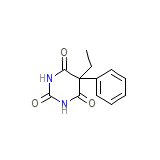Aphenylbarbit




Categoria
Aphenylbarbit Nombres de marca, Aphenylbarbit Analogos
- Adonal
- Aephenal
- Agrypnal
- Amylofene
- Aphenylbarbit
- Aphenyletten
- Barbenyl
- Barbinal
- Barbiphen
- Barbiphenyl
- Barbipil
- Barbita
- Barbivis
- Barbonal
- Barbophen
- Bardorm
- Bartol
- Bialminal
- Blu-Phen
- Cabronal
- Calmetten
- Calminal
- Cardenal
- Chinoin
- Codibarbita
- Coronaletta
- Cratecil
- Damoral
- Dezibarbitur
- Dormina
- Dormiral
- Dormital
- Doscalun
- Duneryl
- Ensobarb
- Ensodorm
- Epanal
- Epidorm
- Epilol
- Episedal
- Epsylone
- Eskabarb
- Etilfen
- Euneryl
- Fenbital
- Fenemal
- Fenobarbital
- Fenosed
- Fenylettae
- Gardenal
- Gardepanyl
- Glysoletten
- Haplopan
- Haplos
- Helional
- Hennoletten
- Henotal
- Hypnaletten
- Hypnette
- Hypno-Tablinetten
- Hypnogen
- Hypnolone
- Hypnoltol
- Hysteps
- Lefebar
- Leonal
- Lephebar
- Lepinal
- Lepinaletten
- Linasen
- Liquital
- Lixophen
- Lubergal
- Lubrokal
- Lumen
- Lumesettes
- Lumesyn
- Luminal
- Lumofridetten
- Luphenil
- Luramin
- Molinal
- Neurobarb
- Nirvonal
- Noptil
- Nova-Pheno
- Nunol
- Parkotal
- Pharmetten
- Phen-Bar
- Phenaemal
- Phenemal
- Phenemalum
- Phenobal
- Phenobarbital
- Phenobarbitol
- Phenobarbituric Acid
- Phenobarbyl
- Phenoluric
- Phenolurio
- Phenomet
- Phenonyl
- Phenoturic
- Phenylethylbarbiturate
- Phenylethylbarbituric Acid
- Phenylethylmalonylurea
- Phenyletten
- Phenyral
- Phob
- Polcominal
- Promptonal
- Seda-Tablinen
- Sedabar
- Sedicat
- Sedizorin
- Sedlyn
- Sedofen
- Sedonal
- Sedonettes
- Sevenal
- Sinoratox
- SK-Phenobarbital
- Solfoton
- Solfoton Talpheno
- Solu-Barb
- Sombutol
- Somnolens
- Somnoletten
- Somnosan
- Somonal
- Spasepilin
- Starifen
- Starilettae
- Stental
- Stental Extentabs
- Talpheno
- Teolaxin
- Teoloxin
- Thenobarbital
- Theoloxin
- Triabarb
- Tridezibarbitur
- Triphenatol
- Versomnal
- Zadoletten
- Zadonal
Aphenylbarbit Marca los nombres de mezcla
Aphenylbarbit Formula quimica
C12H12N2O3
Aphenylbarbit RX enlace
No information avaliable
Aphenylbarbit FDA hoja
Aphenylbarbit MSDS (hoja de seguridad de materiales)
Aphenylbarbit Sintesis de referencia
Hoerlein, EE.UU. Pat. 1,025,872 (1912)
Aphenylbarbit Peso molecular
232.235 g/mol
Aphenylbarbit Punto de fusion
174 oC
Aphenylbarbit H2O Solubilidad
Aphenylbarbit Estado
Solid
Aphenylbarbit LogP
1.777
Aphenylbarbit Formas de dosificacion
Tablet; Elixir
Aphenylbarbit Indicacion
Para el tratamiento de la epilepsia
Aphenylbarbit Farmacologia
Fenobarbital, los barbitúricos de acción más prolongada, se utiliza por sus propiedades anticonvulsivantes y sedantes hipnóticos en la gestión de todos los trastornos convulsivos, salvo ausencias (petit mal).
Aphenylbarbit Absorcion
Absorbida en mayor o menor grado tras la administración oral, rectal o parenteral. Las sales se absorben más rápidamente que las de los ácidos. La velocidad de absorción es mayor si la sal de sodio se ingiere como una solución diluida o se toma con el estómago vacío
Aphenylbarbit Toxicidad
SNC y depresión respiratoria que puede progresar a la respiración de Cheyne-Stokes, arreflexia, constricción de las pupilas en un grado leve (aunque en una intoxicación grave que puede wshow dilatación paralítica), oliguria, taquicardia, hipotensión, disminución de la temperatura corporal y estado de coma. El síndrome de shock típico (apnea, colapso circulatorio, paro respiratorio y muerte) puede ocurrir.
Aphenylbarbit Informacion de Pacientes
PATIENT INFORMATION
Practitioners should give the following information and instructions to patients receiving barbiturates:
1. The use of phenobarbital carries with it an associated risk of psychological and/or physical dependence.
The patient should be warned against increasing the dose of the drug without consulting a physician.
2. Phenobarbital may impair mental and/or physical abilities required for the performance of potentially
hazardous tasks (e.g., driving, operating machinery, etc.).
3. Alcohol should not be consumed while taking phenobarbital. Concurrent use of phenobarbital with other
CNS depressants (e.g., alcohol, narcotics, tranquilizers, and antihistamines) may result in additional CNS
depressant
Practitioners should give the following information and instructions to patients receiving barbiturates:
1. The use of phenobarbital carries with it an associated risk of psychological and/or physical dependence.
The patient should be warned against increasing the dose of the drug without consulting a physician.
2. Phenobarbital may impair mental and/or physical abilities required for the performance of potentially
hazardous tasks (e.g., driving, operating machinery, etc.).
3. Alcohol should not be consumed while taking phenobarbital. Concurrent use of phenobarbital with other
CNS depressants (e.g., alcohol, narcotics, tranquilizers, and antihistamines) may result in additional CNS
depressant
Aphenylbarbit Organismos afectados
Humanos y otros mamíferos














